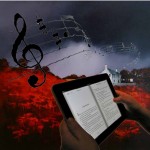Final USI project by Leoni van de Sande. Summary of the report: [PDF, 300K]. Complete report upon request.

The aim of this industrial project at Smart Homes , the Dutch expertise centre on home automation and smart living, was twofold. On the one hand, the level of appreciation of existing (concepts of) smart home applications was examined. In this purpose, (concepts of) smart home applications were first collected through field research, literature, and European and national projects Smart Homes contributes to. Afterwards, the collected (concepts of) smart home applications were filtered based on the smart home classification by Aldrich and its appreciation was tested by means of a questionnaire. Based on the results of this questionnaire, the applications that were most appreciated were visualized. Ideally, these visualizations will be shown in the Smartest Home of the Netherlands, a test and demonstration home located in Eindhoven, to show visitors the added value of home automation (i.e. domotica).
Continue reading Optimizing the added value and usability of the Smartest Home of the Netherlands






